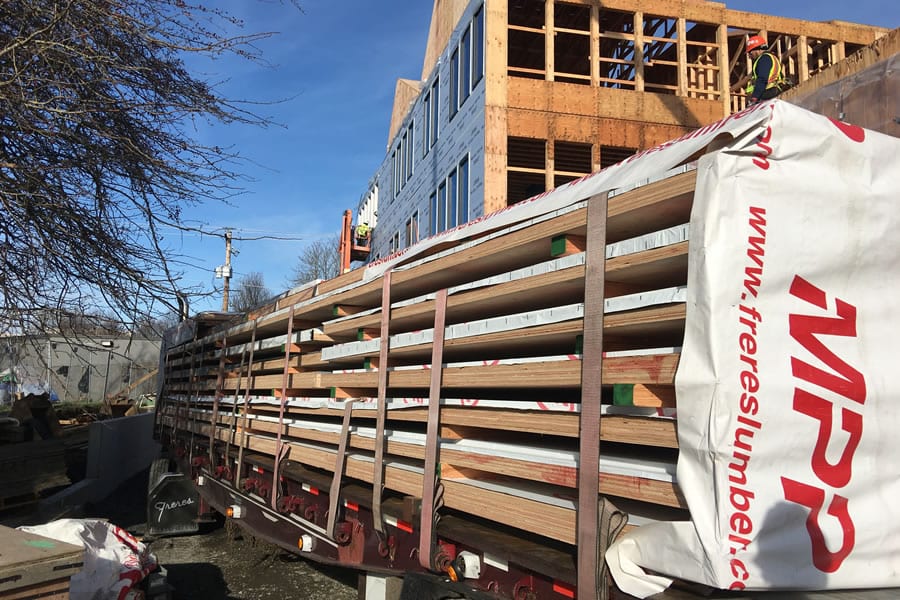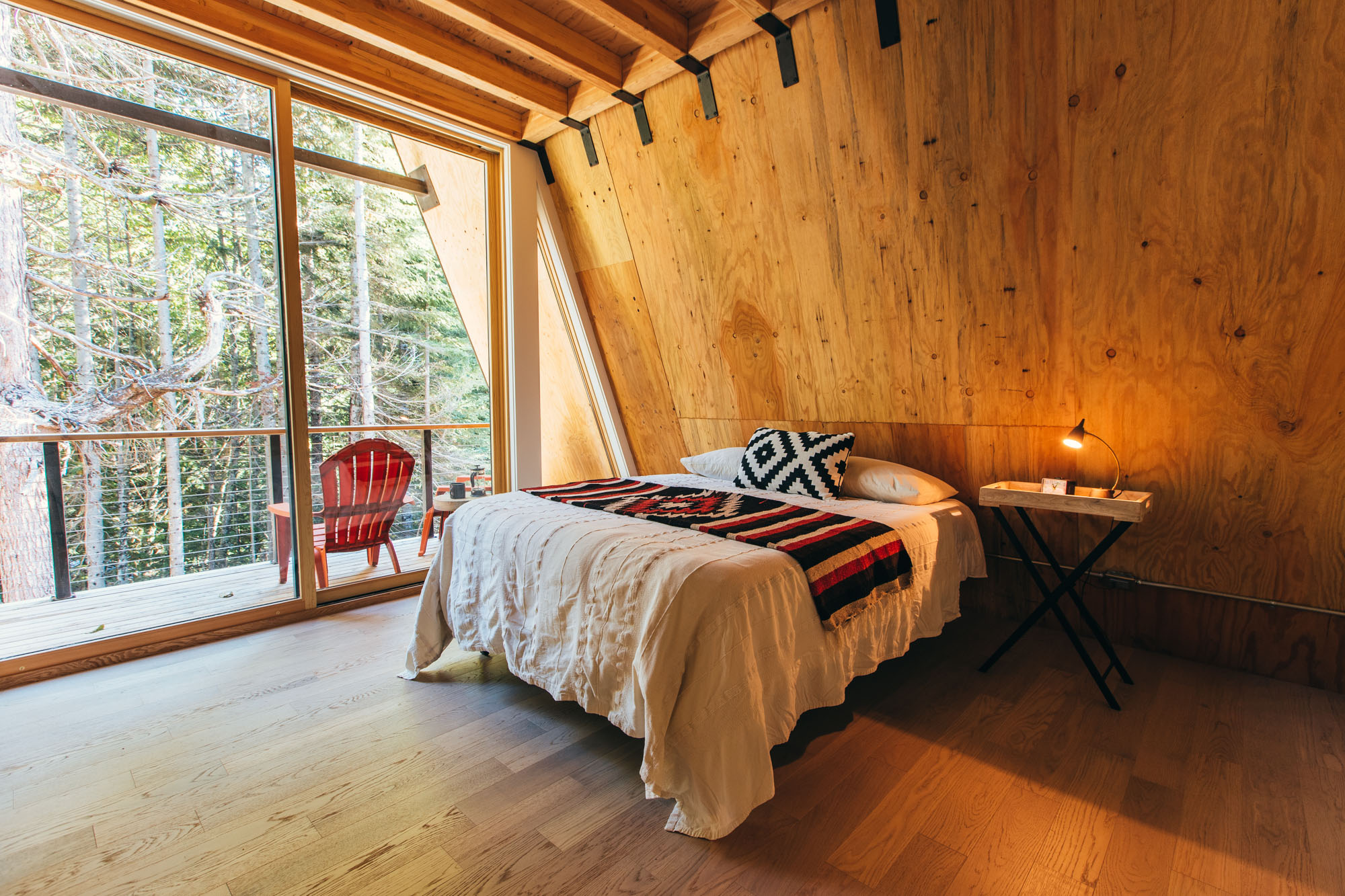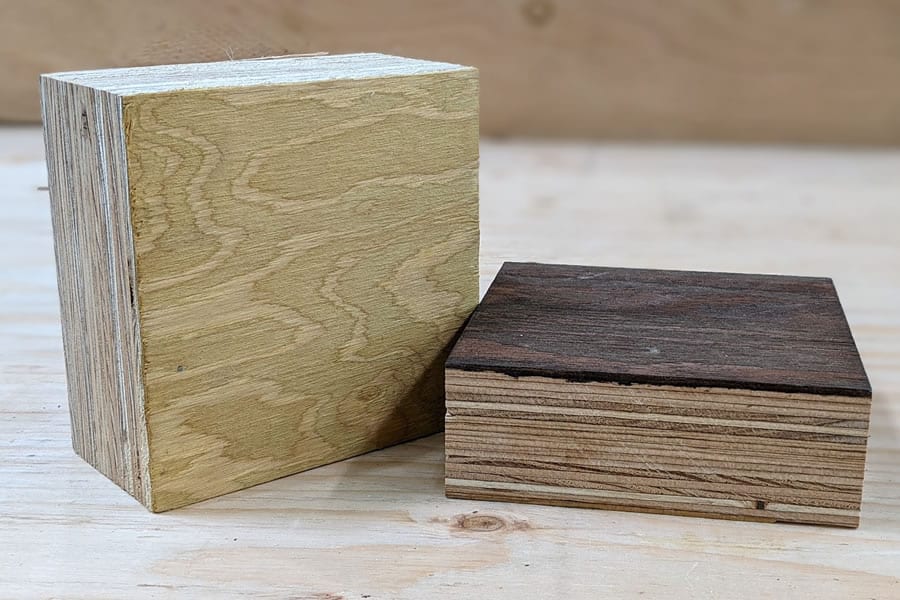Specifications

Mass Ply can save money by using less wood for your next job.
- Equivalent spans as CLT while using less wood
- 6-inch Mass Ply can typically replace a 5-ply CLT panel, saving over 20% in volume
- 2-way span capabilities
- The veneer base of Mass Ply can be laid up for a more balanced minor and major axis capacity
- Greater flexibility in lay ups means that application can be optimized both structurally and economically
- Future layups will provide similar spans with a reduced cost
Mass Ply Applications
- Floors
- Elevator shafts
- Roofs
- Beams and Columns
- Walls and Shear Walls
- Floor Diaphragms
Storage & Handling

Storage
- Store panels on level surface and space to allow air movement around panels
- Protect from rain, snow, sun and mechanical damage
- Keep panels six to twelve inches off the ground
- Cover panels with good quality tarps to protect them from precipitation and ultraviolet (UV) damage
Handling
- Use wide fabric, corner/edge protectors or slings that will not mar the wood. If chains or cables are used, provide blocking or padding to protect panels from damage
- Do not walk on unprotected Mass Ply panels or handle the material with soiled hands or equipment
- Unload trucks and move panels with lifting equipment. Do not drag, dump or drop panels. Off-loading equipment should be specified to the maximum panel weight of the project
- Handling 2" and 3" panels may require special rigging or support as they should not be slung
When Applying Heat to Buildings
- Gradually increase the heat in the building to normal temperatures over a two to three week period, to ensure a gradual change in the moisture content of the Mass Ply
- A slow time for the wood moisture content to equalize with environmental moisture content is desirable
- Do not directly heat the Mass Ply with a forced air system
- Regulate all heating units to avoid temperatures of 100° F at the ceiling
- Maintain normal relative humidity in the building and monitor if necessary
- Important: We recommend applying the final finish to the Mass Ply before heat is applied (If applicable). This will help to regulate the change in moisture content
Appearance

Standard Grade – Plywood D-Grade
- Solid Knots allowed to 1″, no quality limit
- Open defect limited to ¼”
- Splits limited to 24” length
Plus Grade – Nickel C
Specie Grade
- Mass Ply is constructed of Douglas Fir veneer only. If other visual species are necessary, a plywood overlay is required.
- Though we have the ability to provide improved visual grades, it is strongly recommended that architectural finishes are applied in the field.
Appearance Grade (High Density or HD veneer Grade)
- All grade characteristics are assumed to be on the 4’ x 8’ base panels used to construct Mass Ply, not for each 4’ x 8’ area on the larger panel.
- Less than eight knots dime-nickel C size (1/4" to ½") allowed on the face of the panel
- Splits allowed to 6" (green)
- Open knots and splits will require field repair by the customer. Veneer is not repaired during manufacturing.

Final Finish
- A finish must be used on our product when it is left exposed. It should not be assumed that the product can be left bare.
- Freres does not provide in-house staining or finishing services
- Apply stain to a small test section as different colors of stain bring out different characteristics in the wood
- When finish sanding is needed, sand in the direction of the grain using 120 grit sandpaper
- Follow the application directions for whatever finish product used
Weather Conditions
- If bolts are used with steel connections, ensure they are free of oil to avoid staining
- Galvanized bolts and connectors will minimize staining
UV Damage
- If a portion of the panel has been left uncovered in the sun, UV damage will occur
- All wood species change color over time as a result of exposure to natural light and oxidation of the wood fibers
- Over the long term, the color differences will even out and in most instances will disappear
- If it is deemed necessary, the color difference can be corrected in the short term by manually sanding the affected areas to remove the sun-tanned marks on the beam
Looking for more information?
We welcome your inquiry!